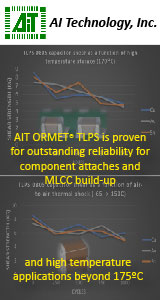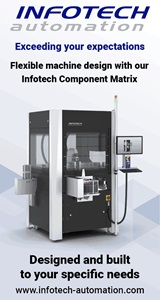|

|
|
| Ask the Experts | |||||||
|
|||||||
|
May 13, 2024 - Updated April 30, 2014 - Originally Posted Challenges with 01005 ComponentsWe are going forward with assemblies that will use 01005 components. We're wondering if anyone on the experts panel would have some input as to what are the most important challenges we are going to face? T.G. |
|||||||
| Expert Panel Responses | |||||||
|
Here is a my list of important challenges:
Engineering and Operations Management Independent Consultant Georgian Simion is an independent consultant with 20+ years in electronics manufacturing engineering and operations.
Contact me at georgiansimion@yahoo.com. In general, the miniaturization of components leads to smaller and smaller pads on the PCB. The printed solder paste will as a result have an increased surface to volume ration. The solder paste will be subject to a higher tendency for oxidization as well as a host of other complications. This leads to more challenging printing and reflow processes. You may want to check with both your solder paste and components suppliers to determine what impact your 01005 components will have on their thermal process specs. The odds are that you will face a tighter thermal process window, and you will need to develop a new setup for your reflow oven in order to position the PCB profile within this window. Also, with a smaller process window you will need to check your thermal process more frequently as there will be less room for process drift.
President inspīre solutions LLC Bjorn Dahle is the President of inspīre solutions LLC. He has 20 years experience in the electronic manufacturing industry with various manufacturing equipment companies covering pick & place, screen printers and thermal process management.
01005 component size is small and it presents many challenges in its assembly.However, one of the most challenging aspect is solder paste printing process. The important paste printing process factors are solder paste type, optimum PCB pad and stencil aperture design. Results indicate that stencil thickness is significant factor for solder release characteristics.0.003"thick stencil provided much superior paste release than 0.004" thick stencil. You can find more information from these papers/presentations:
R&D Manager MK Electron Co. Ltd Santosh Kumar is R&D Manager at the MK Electron Co. Ltd., Korea and engaged in the electronic interconnect materials development and technical marketing. His key focus is novel lead-free solder materials, electronics packaging, wire bonding materials and process.
You may wish to consider an ionizer set-up for the pick/place machine. It helps to reduce the static buildup from the tape and reel packaging. Without it even very minor static charges can cause the small parts to jump out of the tape cavities as the cover tape is peeled back, making repeatable pick performance nearly impossible. Many think that the issue is sticky cover tape but that is not usually the case. The ionizer should not blow directly onto the open reels, but rather indirectly over the feeders. I have seen this make a huge improvement in pick and place performance for many companies.
Advanced Engineer/Scientist General Dynamics Richard D. Stadem is an advanced engineer/scientist for General Dynamics and is also a consulting engineer for other companies. He has 38 years of engineering experience having worked for Honeywell, ADC, Pemstar (now Benchmark), Analog Technologies, and General Dynamics.
|
|||||||
| Submit A Comment | |||||||
|
Comments are reviewed prior to posting. You must include your full name to have your comments posted. We will not post your email address. |
|
Free Newsletter Subscription
Circuitnet is built for professionals who bear the responsibility of looking ahead, imagining the future, and preparing for it. Insert Your Email Address |
|

|





